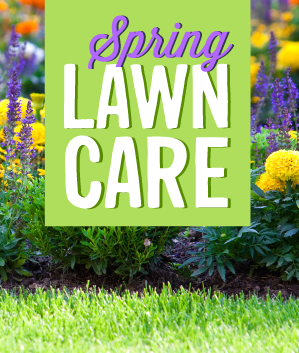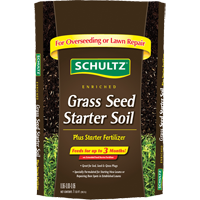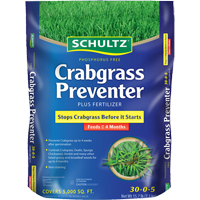
Spring is a great season! The snow and cold is slowly disappearing, the days are getting longer and the sun is feeling warm again. Once this time breaks, most jump at the opportunity to get outdoors. This is a great time to start preparing your lawn for the growing season. Be sure the ground is dry enough to avoid compacting the soil or damaging your lawn.
Rake. Start off the growing season with a clean, fresh lawn. Remove any sticks, leaves and debris that can harm the mower blades. It will also expose the soil and grass to the warm sun.
Aerating. Aeration is always a good idea when you have soil compaction, especially from the cold winter months. Aeration helps the roots breath and creates space for fertilizer, seed and water to reach the roots. The optimal time to aerate for warm season grasses is in the spring/early summer and for cool season grasses is in the fall. Be sure to give your lawn time to repair before it goes dormant.
Seed. Spring is a great time for repairing and fixing bare spots. Rake the area 1 to 2 inches to expose the soil and mix in a lawn soil formulated for starting grass from seed or sod, such as Schultz Grass Seed Starter Soil. This will enhance the native soil by adding nutrients for the newly planted seeds. Be sure to use a grass seed that matches your existing lawn and follow the packaging instructions carefully. Fall is the best time to renew an entire lawn because it is less stressful on the grass. It will also be easier to keep up on watering and weeds begin to go dormant. The grass can become established, then once spring arrives, it is ready to grow! You can certainly renew a lawn in the spring; it is just not the optimal time.
Weed Control. If grassy weeds, like crabgrass, have been a past problem, stop them before they begin. Apply a fertilizer with a pre and early post – emergent before the soil temperatures warm up for season-long control of crabgrass. Be sure to only apply to well-established lawns with a developed root system. Some weeds can be dealt with by hand. Stay on track by implementing a Lawn Fertilizer Program. This helps maintain timing and application of the correct and effective nutrients.
Watering. Newly seeded areas require daily watering in order to keep the soil and seed contact moist. Even one day of drying can cause damage. Once lawn growth has been established, reduce the frequency of watering, and increase the duration. Water deeply in order to encourage healthy root growth and to discourage weeds.
Mowing. Before your first mow, make sure the moisture level is low and your lawn is not soggy or damp. Be sure your mower blades are sharp and clean. Follow the 1/3rd trim rule by only mowing 1/3rd off the grass blade during each mowing. Taller grass survives long and healthier in severe weather conditions as well as discouraging weed germination.











